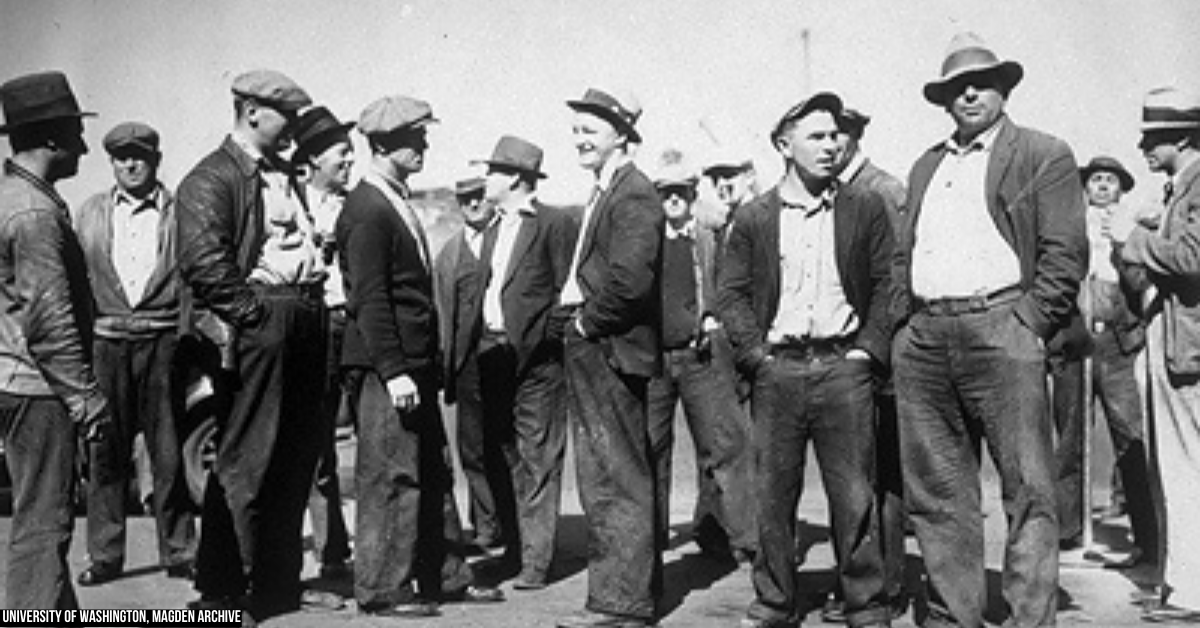LOCAL
Seattle, 1934: the strike of the Longshoremen
By CAL WINSLOW
(June 25, 2024)
Excerpted. Read the full piece.
On the morning of May 9, 1934, a rejuvenated International Longshoremen’s Association (ILA) struck shippers in the West Coast Ports, shutting down them all from Bellingham, WA to San Diego.
Seattle’s dockers, some 1500, walked off their jobs that morning, to face an array of hostile shippers united to maintain an “open shop” and the “fink hall” on Elliott Bay, as well as hundreds of scabs reporting to work on city piers. Seattle was the coast’s second leading port, the hub of a dozen coastal and Puget Sound ports, second only to San Fransisco in volume of goods passing over its piers.
In Tacoma, a smokey industrial city, thirty miles south of Seattle, longshoremen walked as well, so did men in the rest of the ports on the Sound and along the coast. Tacoma was the one port on the Pacific Coast where the ILA emerged from the twenties unscathed, the union’s single stronghold. The long twenties had taken its toll on the union, and it was not at all clear that the Seattle men would prevail. In the immediate days after the strike began, there were still hundreds of strikebreakers at work, and the employers clearly had plans to introduce more. The Tacoma dockers saw the situation as “shaky,” and no one wanted to see shipping continue in Elliott Bay, least of all rank and-file longshoremen themselves; defeat in Seattle would undermine the strike everywhere.

On May 12, following an early secret meeting, the Tacoma leaders sent out a call. By 8:30 am, one thousand dockers from Tacoma and Everett, as well as the smaller ports, appeared at the McCormick piers, there to join the Seattle strikers in sweeping the scabs from the waterfront. These strikers and their supporters, led by Tacoma’s “flying squad,” marched from pier to pier, breaking down barricades and overwhelming company guards, throwing more than a few into the Bay.
When strikebreakers came off the ships, they were forced to walk through “gauntlets,” crowds of hundreds of jeering strikers shouting abuse. At the same time, the off-shore unions, the sailors and the Masters, Mates and Pilots made the longshoremen’s strike a maritime strike. The maritime workers tied up their vessels when they reached port. On the shore, rank-and- file Teamsters joined the crowds of Seattle strikers, refusing to cross ILA picket lines.
The longshoremen were joined by others as well. One striker reckoned that “1000 unemployed came down and backed us up… they stayed until there was not one scab working on the Seattle waterfront.” And among these were the radicals of the day, “outsiders,” loggers and sailors, IWWs (Industrial Workers of the World) and Communists. As much as anything, it was the sight of these men that shook the city’s elites; it was all too reminiscent of 1919, when workers took over the city and ran it for five days. The mayor proclaimed that “a soviet of longshoremen are dictating what can be done on the waterfront.” The Seattle Times led with “Soviet Rules Seattle.”
In all, it was an astonishing display of working-class solidarity and power in a year of extraordinary strikes.
Cal Winslow is a long-time labor activist, educator and author of Radical Seattle: the General Strike of 1919. Read his full piece on the 1934 Longshoremen strike online.





